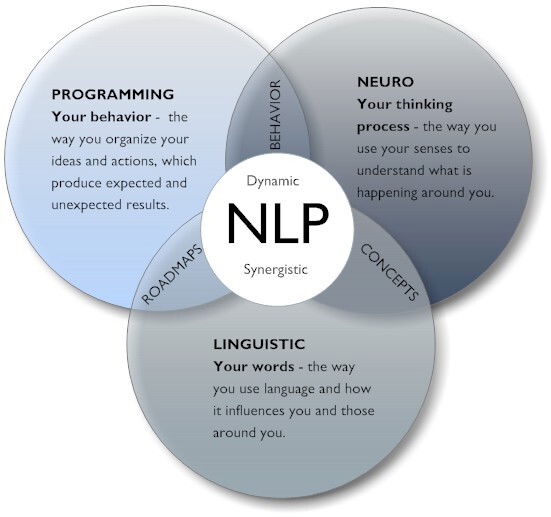NLP

Neuro-linguistic programming is a way of changing someone’s thoughts and behaviors to help achieve desired outcomes for them.
NLP uses perceptual, behavioural, and communication techniques to make it easier for people to change their thoughts and actions.
NLP tries to detect and modify unconscious biases or limitations of an individual’s map of the world.
NLP is not hypnotherapy. Instead, it operates through the conscious use of language to bring about changes in someone’s thoughts and behavior.
For example, a central feature of NLP is the idea that a person is biased towards one sensory system, known as the preferred representational system or PRS.
Therapists can detect this preference through language. Phrases such as “I see your point” may signal a visual PRS. Or “I hear your point” may signal an auditory PRS.
An NLP practitioner will identify a person’s PRS and base their therapeutic framework around it. The framework could involve rapport-building, information-gathering, and goal-setting with them.
 Neuro-linguistic programming (NLP) is an approach to communication, personal development, and psychotherapy (Wikipedia article on Neuro-linguistic programming)
Neuro-linguistic programming (NLP) is an approach to communication, personal development, and psychotherapy (Wikipedia article on Neuro-linguistic programming)
NLP is used as a method of personal development through promoting skills, such as self-reflection, confidence, and communication.
Practitioners have applied NLP commercially to achieve work-orientated goals, such as improved productivity or job progression.
More widely, it has been applied as a therapy for psychological disorders, including phobias, depression, generalized anxiety disorders or GAD, and post-traumatic stress disorder or PTSD.
For more information please feel free to visit our Contacts Page and reach out to us.